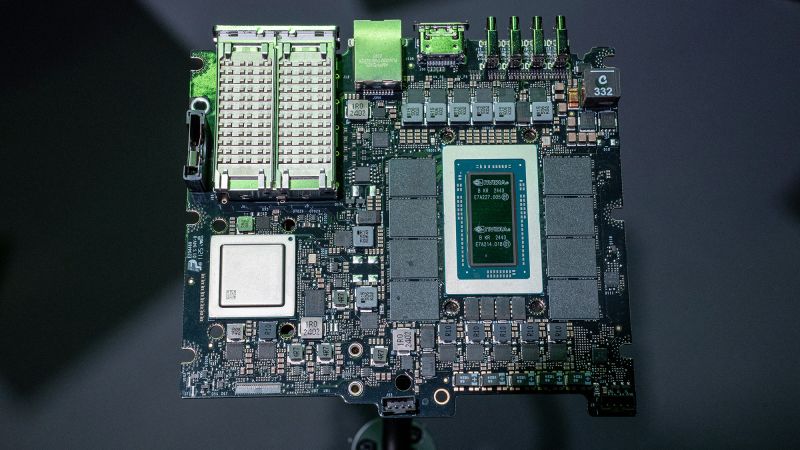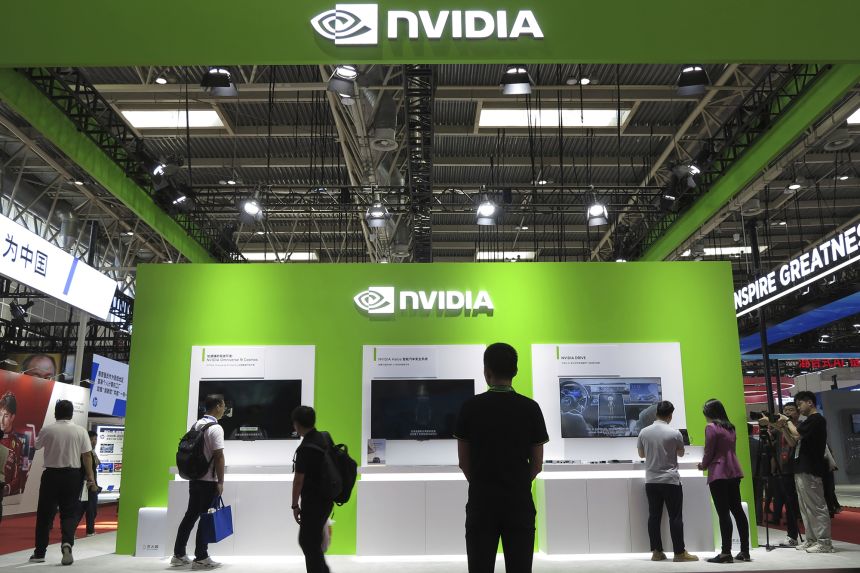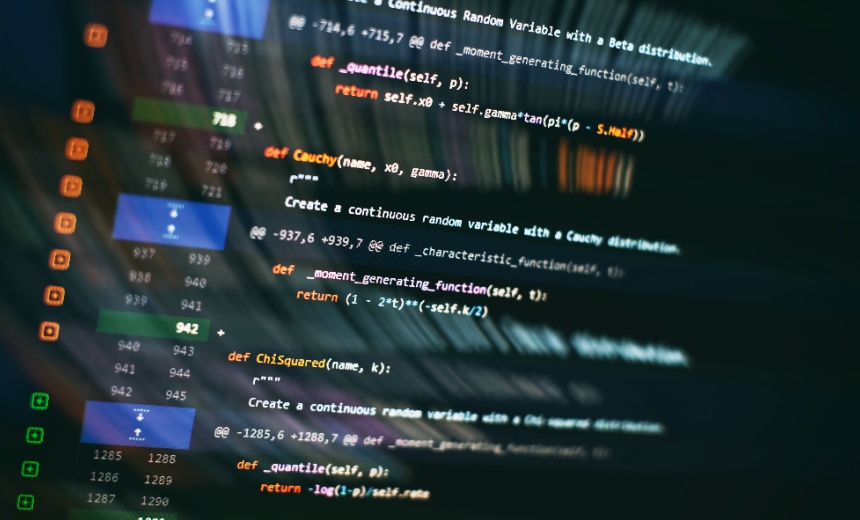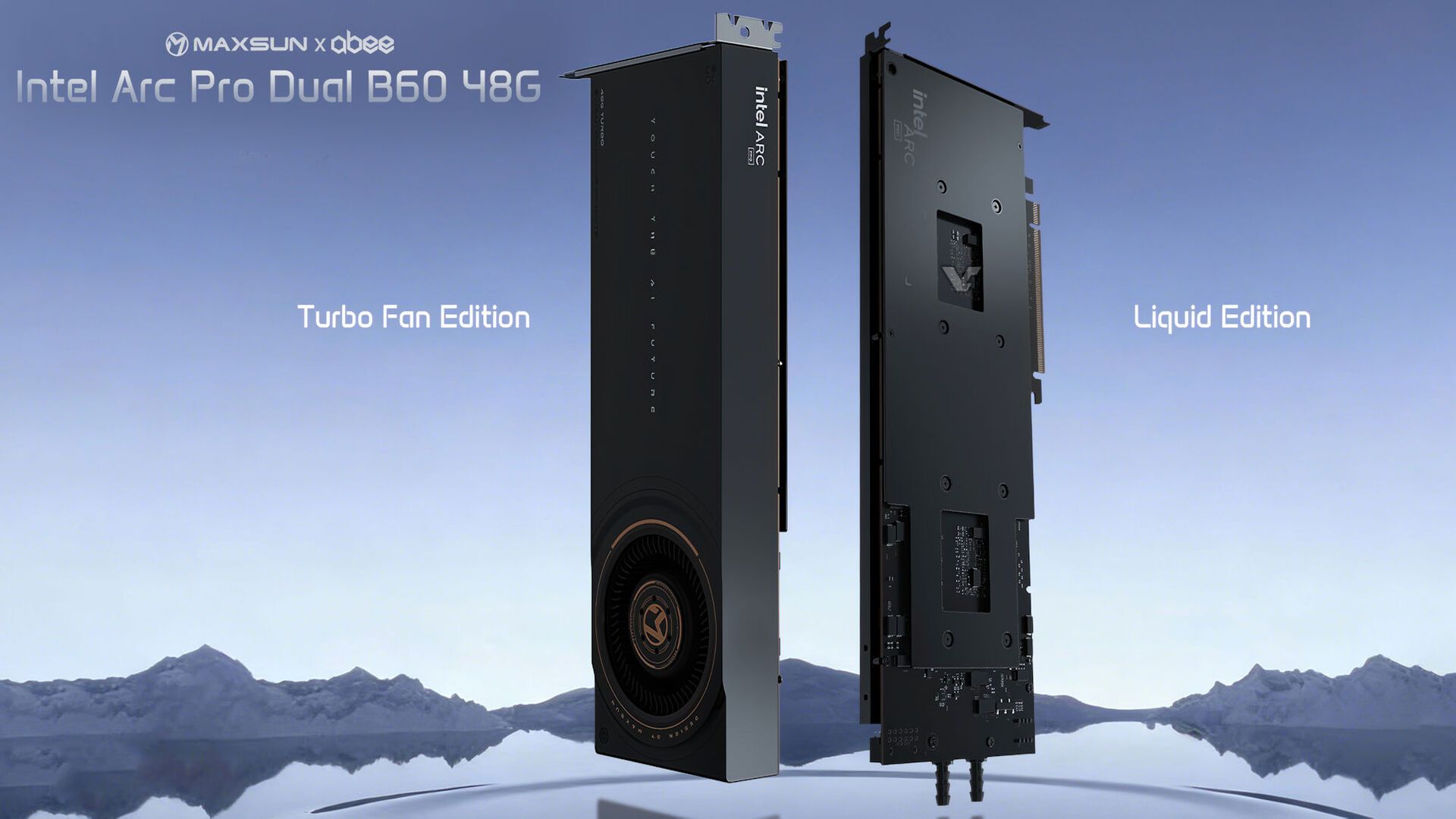Instagram head Adam Mosseri has announced that as part of a test, some Instagram users will be able to try a new menu bar in the app with a different arrangement of tabs. Notably, the new menu bar has dedicated tabs for both Reels and DMs, two of…
Blog
-

Two greenish comets are streaking across the night sky this month
Two greenish-hued comets are swinging through the inner solar system this fall, offering a rare chance to spot them in the coming weeks.
The comets, named C/2025 A6 (Lemmon) and C/2025 R2 (SWAN), are visible from the Northern Hemisphere now as…
Continue Reading
-
Violence erupts in eastern Pakistan as Islamists try to march on capital for pro-Palestinian rally
LAHORE: Violent clashes erupted Friday between police and Islamists in Pakistan’s eastern city of Lahore after security forces tried to stop thousands of demonstrators from…
Continue Reading
-

What is Nvidia, the world’s leading AI chipmaker entangled in US-China trade tensions?
Tech giant Nvidia is the world’s leading artificial-intelligence chipmaker, but the company’s success has also put it in the crossfire of trade tensions.
The Santa Clara, California-based company, which is approaching a market capitalization of $5 trillion, has seen rapid growth due to its chips, which are predominantly used to power massive data centers used by other tech firms, like OpenAI, the creator of popular AI chatbot ChatGPT.
But Nvidia’s leading technology has been used as a negotiating tool in President Donald Trump’s trade spat with China, which was kickstarted by Trump’s sweeping tariffs in April and has escalated over rare earth mineral disputes.
It’s further complicated Nvidia’s relationship with China, where it was doing roughly 25% of its graphics processing unit sales, estimates Gil Luria, head of technology research at D.A. Davidson. Nvidia’s popularity has also embroiled the company in a steep controversy for potentially allowing China to skirt around export restrictions as trade tensions continue.
“Nvidia has gotten caught in the middle of two very important things: a trade dispute between China and the United States … but more importantly, AI has become a matter of national security,” Luria said.
Nvidia CEO Jensen Huang has argued that restricting sales of American AI chips will ultimately enable Chinese developers to create their own alternatives.
Huang, 62, was born in Taiwan, and at age 9 was sent by his parents to live in Tacoma, Washington. In 1993, the Oregon State and Stanford University grad co-founded Nvidia, which started as a graphics-based processing company.
Huang — who is worth $167 billion, according to the Bloomberg Billionaires Index — has been treated as a rockstar in Taiwan for his success in the AI chips race, and previously worked as a microprocessor designer at now-competitor AMD.
“It’s really unusual to have somebody who can go from starting what was at the time a very small tech startup and throw it to the extraordinary level of success that Nvidia has grown to,” John Villasenor, a nonresident senior fellow at Brookings Institution and professor at the University of California, Los Angeles, said of Huang.
Nvidia powers the data centers that support AI technology and has been the go-to provider of those chips.
Nvidia essentially created the architecture for anyone who develops AI, leading to a surge in demand for its technology, according to Arun Sundararajan, a professor of technology, operations and statistics at NYU Stern School of Business.
The company said in September that it would invest up to $100 billion in OpenAI and provide it with data center chips as soon as late 2026.
Nvidia is competing with AMD for deals with partners like OpenAI, which said Monday it would use 6 gigawatts of AMD chips to power OpenAI’s data centers.
“The competition has undeniably arrived. Customers will choose the best technology stack for running the world’s most popular commercial applications and open-source models. We’ll continue to work to earn the trust and support of mainstream developers everywhere,” an Nvidia spokesperson said in a statement shared with CNN.
In recent years, the US government has sought to restrict Chinese access to American technology to slow Beijing’s progress on AI, thus allowing the United States to take the lead. Trump continued the trend in April, when he restricted China’s access to chips, including Nvidia’s H20, as part of his trade war.
Such restrictions on the sale of chips offended China, Luria said, and ultimately led to Beijing limiting the purchase of chips to their companies.
But the White House recently reversed their position.

“You want to sell the Chinese enough that their developers get addicted to the American technology stack,” Commerce Secretary Howard Lutnick said in July.
Trump in August greenlit sales of chips to China in an agreement with US chipmakers. Nvidia and AMD, Trump said, would give 15% of revenue from China sales to the US in exchange for export licenses. That includes giving China access to Nvidia’s H20 chips, which were released in 2024 to maintain access to the Chinese market following strict export controls.
But Beijing seemed unimpressed and trade tensions have only escalated since the start of a tit-for-tat trade war in April.
China has since increased import restrictions on US chips, including Nvidia’s processors. Trump said Friday on Truth Social that he would impose a 100% tariff on China “over and above any Tariff they are currently paying” beginning November 1 over export controls on rare earth minerals.
“Where this all gets resolved is unclear,” Luria said, because China believes “that stopping the sale of Nvidia chips into China creates some leverage on the US in the negotiation.”
Commerce Department officials are investigating whether Nvidia’s customer, Singapore-based Megaspeed, is helping China sidestep export restrictions for access to Nvidia’s tech, according to a report from the New York Times. CNN has not independently verified the Times’ reporting.
Nvidia did not respond to CNN’s request for comment.
And Nvidia’s H20 chips are widely believed to have contributed to DeepSeek, an advanced Chinese AI model that shook Silicon Valley upon its release earlier this year, raising concerns that China was further ahead on AI than previously understood.
China could also gain access to the chips on the black market, since another country could buy Nvidia’s chips and resell them to China, Sundararajan said.
“The bigger issue is if we push harder to restrict global access to Nvidia’s products, can that be counterproductive? Because it forces these countries to speed up their own pace of innovation,” Sundararajan said.
Continue Reading
-

Light-Driven Reaction Leads to Advanced Hybrid Nanomaterial
Newswise — Scientists are exploring many ways to use light rather than heat to drive chemical reactions more efficiently, which could significantly reduce waste, energy consumption, and reliance on…
Continue Reading
-

New Jumanji Movie to Shoot in November, Brittany O’Grady Joins
Jumanji is back in game play mode as Sony’s latest sequel of its hit franchise heads toward a November start of production in Los Angeles.
Dwayne Johnson, Kevin Hart, Jack Black and Karen Gillan are returning to star in the feature,…
Continue Reading
-

Single psilocybin dose provides long-lasting relief from depression
Psilocybin is a natural psychedelic compound found in certain mushrooms that affects mood and perception. In a new study, researchers found that a single dose of psilocybin quieted chronic pain and depression-like behavior within 24 hours.
The…
Continue Reading
-

Hackers Exploit LFI Flaw in File-Sharing Platforms
Attack Surface Management
,
Security Operations
…Continue Reading
-

AI–Enhanced SALT Score Improves Accuracy in Alopecia Areata Assessment
A novel artificial intelligence (AI) tool could improve the accuracy and objectivity of
alopecia areata severity and treatment efficacy, according to the authors of a proof-of-concept case report published inJAAD Case Reports .1The current standard for quantifying hair loss in alopecia areata is the Severity of Alopecia Tool (SALT) score, the authors explained. But in real-world clinical practice, the SALT score is rarely used due to its time-consuming nature and, notably, high interrater variability.2 Trichoscopy is another tool that allows for more detailed visualization of the hair and scalp to differentiate alopecia areata and monitor treatment progress, but it has limited availability in clinical settings because it requires specialized equipment and examiner expertise.
The new approach detailed in the care report leverages an AI-powered assessment tool to track and manage alopecia areata.1 The system automatically calculates the area of alopecia (AI-Area) to derive an AI-SALT score.
“This case demonstrates a proof-of-concept for tracking and managing [alopecia areata] using an AI-based assessment tool,” the authors wrote. “For this case of [alopecia areata], AI is used to calculate accurate areas of alopecia, and trichoscopy was used to detect early follicular regrowth, providing a faster, more comprehensive, and objective evaluation of disease progression and treatment response.”
In the case of a 47-year-old male receiving intralesional triamcinolone acetonide for a solitary alopecia areata patch, the AI tool provided a more accurate and sensitive assessment than traditional manual methods. Specifically, the AI-SALT Score captured incremental progress between early visits that the Manual-SALT Score failed to detect.
“Using the AI tool to assess this patient’s alopecia, demonstrates fast, easy-to-use AI-powered imaging via smartphone to precisely and objectively quantify alopecia for clinical evaluation,” the authors wrote. “Furthermore, percentage change of alopecia area provides more accurate and sensitive assessment than the manual SALT system demonstrated by the AI-SALT scores’ finer decimal-level precision.”
This enhanced sensitivity has a direct impact on patient adherence and overall management value. At the 8-week mark, the patient was considering discontinuing treatment due to a lack of noticeable improvement based on subjective observation. However, the AI tool’s objective data, which demonstrated clear progress, alongside trichoscopic images showing hair regrowth, motivated the patient to continue therapy. This demonstrates the tool’s ability to ensure sustained adherence when therapy is working and improve outcomes.
A crucial aspect of the case is that it shows the AI tool’s capacity to generate objective, standardized documentation, the authors noted. Insurers routinely require precise evidence of disease severity, including accurate SALT scores, to approve high-cost treatment coverage. By offering fast, easy-to-use, and highly precise quantification, this AI-based system can provide the verifiable metrics needed to satisfy coverage requirements, potentially reducing administrative burden and accelerating patient access to care.
“Today, AI tools are increasingly being used to assess skin disorders, and we are beginning to integrate these tools into our daily clinical practice,” the authors explained. “In this case, the integration of AI enabled more accurate monitoring and patient engagement, suggesting potential to improve care through personalized and informed management of [alopecia areata].”
The tool does have limitations, they noted, especially in cases of androgenetic alopecia, which does not have distinct patches of hair thinning. However, combining AI assessment with trichoscopy to quantify individual hairs or follicular units does enhance assessment, they explained. The AI-SALT score’s utility should also be validated in more severe or widespread alopecia and beyond single-patch cases, as well as in diverse populations.
“Here, we present a proof-of-concept for integrating AI tools in clinical settings to assess and monitor AA, demonstrating the potential to deliver precise and objective data that inform treatment decisions and patient engagement,” the authors concluded. “However, this is a proof-of-concept used on one patient, and further validation is necessary to ensure broader applicability.”
References
1. Chan E, Ramsay K, Tyli R, et al. AI-based alopecia assessment: a proof of concept for enhancing accuracy and objectivity in hair loss measurement. JAAD Case Rep. Published online October 7, 2025. doi:10.1016/j.jdcr.2025.09.023.
2. King BA, Senna MM, Ohyama M, et al. Defining severity in alopecia areata: current perspectives and a multidimensional framework. Dermatol Ther. 2022;12(4):825-834. doi:10.1007/s13555-022-00711-3
Continue Reading
-

MaxSun’s wild new liquid-cooled dual GPU card packs 48GB of memory and might just bend workstation logic to its will
- MaxSun design revives long-abandoned dual-GPU engineering with modern cooling
- Each slim card manages 48GB of memory and dual GPUs in tight spaces
- MaxSun Intel Arc Pro B60 48G Turbo Edition allows dense GPU stacking across full PCIe 5.0 bandwidth
Continue Reading

